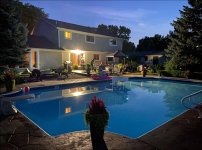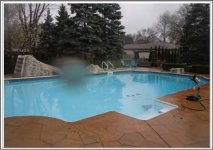- Apr 18, 2017
- 83
- Pool Size
- 32000
- Surface
- Vinyl
- Chlorine
- Salt Water Generator
- SWG Type
- CircuPool RJ-60 Plus
Hello,
I am in the process of buying a house with an IG pool (what details I know at this time are in my signature).
I grew up with above ground pools and have had one much of my life, but they were always salt water pools. I would like to convert this one at some point but from what I've read here in the forums, one should double the SWG output (35k pool would need 70k SWG output).
I've been searching and it doesn't seem anyone makes a SWG that I could double based on this pools capacity (55,000 gal.)
Do any of you know of one that I am overlooking? Do I have to give up on having a salt water pool? Can I use two SWG's? What say all of you
Thanks!
Steph
I am in the process of buying a house with an IG pool (what details I know at this time are in my signature).
I grew up with above ground pools and have had one much of my life, but they were always salt water pools. I would like to convert this one at some point but from what I've read here in the forums, one should double the SWG output (35k pool would need 70k SWG output).
I've been searching and it doesn't seem anyone makes a SWG that I could double based on this pools capacity (55,000 gal.)
Do any of you know of one that I am overlooking? Do I have to give up on having a salt water pool? Can I use two SWG's? What say all of you
Thanks!
Steph



